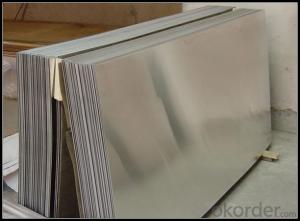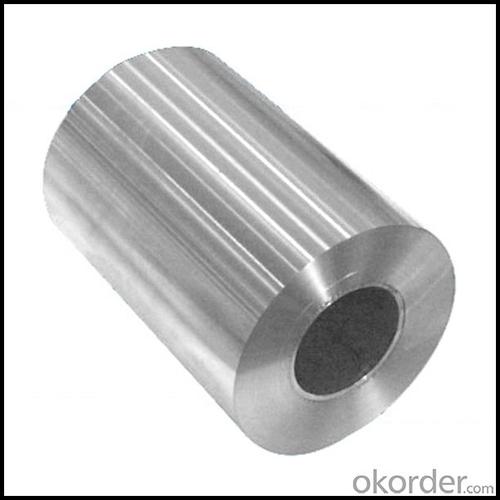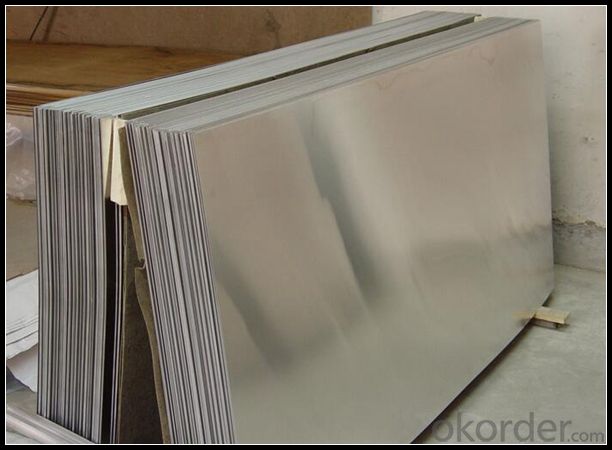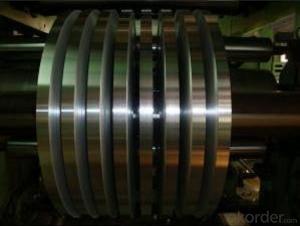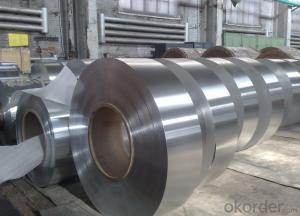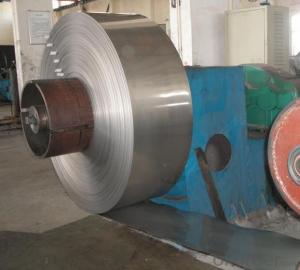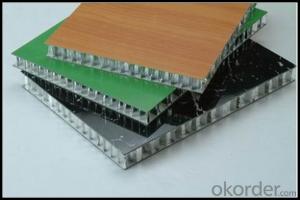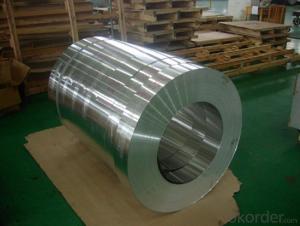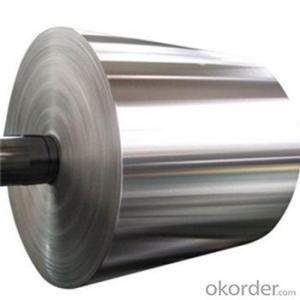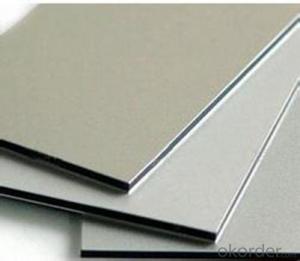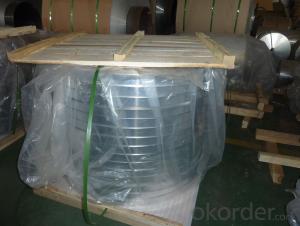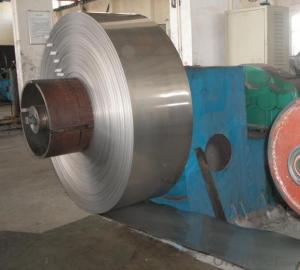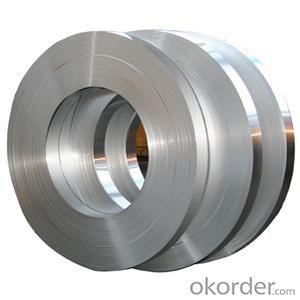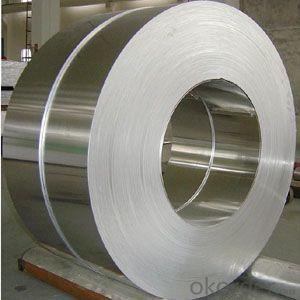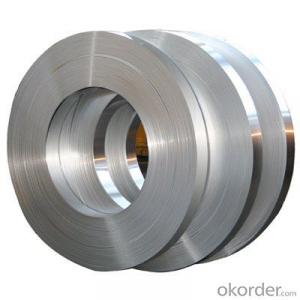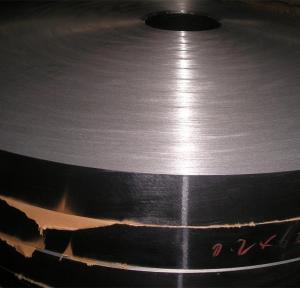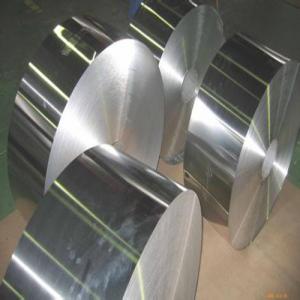Flexible Aluminum Strips for Building with Best Quality at Factory Price
- Loading Port:
- Tianjin
- Payment Terms:
- TT OR LC
- Min Order Qty:
- 1 m.t.
- Supply Capability:
- 4999 m.t./month
OKorder Service Pledge
OKorder Financial Service
You Might Also Like
Specification
1. Specification of Aluminum
1) Alloy | 1050, 1060,1100, 3003 3004 3105 3005 5005 5052 etc |
2) Temper | O/H12/H14/H1/H18/H32/H34/H36/H38//H111/H112/H116/H321/T6/T651/T3/T351 etc |
3) Thickness | 0.1mm to 6mm |
4) Width | 20mm to 3300mm |
5) Coil weight | 100kgs to 6 tons depends on actual requirement |
6) Core material | Aluminum alloy |
7) Coil Inner diameter | 76mm, 152mm,or as required |
2. Application of Aluminum
(1).Oil and petrochemical industries (i.e. tools for use in non-sparking environments
(2).Exterior: wall cladding, facades, roofing, canopies, tunnels,column covers , renovations...
(3).Advertisement: display platforms, signboards, fascia, shop fronts...
(4).Interior: wall cladding, ceilings, bathrooms, kitchens and balconies, shutters, doors...
3. Feature of Aluminum
Aluminium is remarkable for the metal's low density and for its ability to resist corrosion due to the phenomenon of passivation. Structural components made from aluminium and its alloys are vital to the aerospace industry and are important in other areas of transportation and structural materials, such as building facades and window frames.
Be free from Oil Stain, Dent, Inclusion, Scratches, Stain, Oxide Dicoloration, Breaks, Corrosion, Roll Marks, Dirt Streaks and other defect which will interfere with use
4. Certificate:
SGS and ROHS(if client request, paid by client), MTC(plant provided), Certificate of Origin(FORM A, FORM E, CO), Bureau Veritas and SGS (if client request, paid by client), CIQS certificate
5. Image of Aluminum
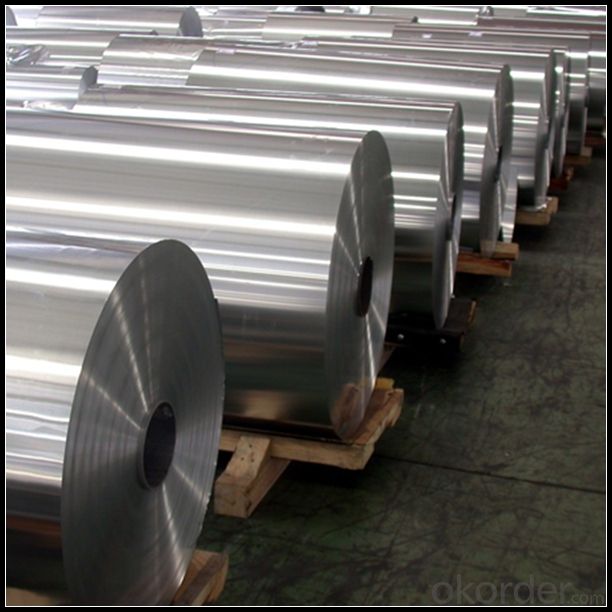
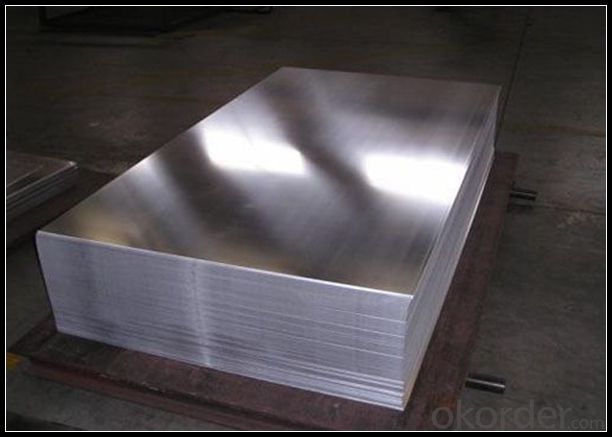
6. Our Service
1. Reply your enquiry in 24 working hours. |
2. OEM, buyer design, buyer label services provided. |
3. Exclusive and unique solution can be provide to our customer by our well traned and professional engineers and staffs. |
4. We can provide free sample for your check |
5. We have the certification of ISO 9001 |
6. Timely delivery |
7. Special discount and protection of sales area provided to our distributor. |
8. Good after-sale service. |
7. FAQ
Q: What is the produce prase? | ||||
A: Normally it would be 40days after received your deposit. | ||||
Q: Can you provide free samples? | ||||
A: Yes, free samples will be sent to you on freight at destination. | ||||
Q: Can I get your latest catalogue? | ||||
A: Yes, it will be sent to you in no time. | ||||
Q: What is the MOQ? | ||||
A: 3 tons | ||||
Q: What are your payment terms? | ||||
A: We accept L/C, D/A, D/P, T/T, West Union,etc. |
- Q: This question asks for a comparison of the benefits and drawbacks associated with the use of aluminum strips.
- <p>Aluminum strips offer several advantages, including high strength-to-weight ratio, corrosion resistance, and excellent thermal conductivity. They are lightweight, which makes them ideal for applications where weight is a concern, such as in the aerospace and automotive industries. Their resistance to corrosion means they can be used in environments where other metals might rust or degrade. Additionally, their thermal conductivity makes them useful in heat exchangers and other thermal management applications. However, aluminum strips also have disadvantages. They are less rigid than some other metals, which can be a drawback in applications requiring high stiffness. They also have a lower melting point compared to metals like steel, which can limit their use in high-temperature applications. Furthermore, aluminum is a good conductor of electricity, which might be undesirable in certain electrical applications where insulation is needed.</p>
- Q: Is it possible to utilize aluminum strips in construction for decking or fencing purposes?
- <p>Yes, you can use aluminum strips for decking or fencing projects. Aluminum is a popular choice due to its durability, resistance to corrosion, and low maintenance requirements. It is lightweight, easy to install, and can withstand various weather conditions. Aluminum strips can be used to create modern and sleek designs, and they are also recyclable, making them an environmentally friendly option. However, it's important to ensure that the aluminum strips are of suitable thickness and quality to bear the weight and stress expected in your specific project.</p>
- Q: What specific considerations or precautions should be taken when using aluminum strips in extremely cold weather conditions?
- <p>In cold climates, aluminum strips may become more brittle and susceptible to cracking or breaking. It's important to use aluminum alloys specifically designed for low-temperature applications to maintain strength and ductility. Proper installation is crucial, ensuring that strips are not overly stressed or subjected to sharp bends that could lead to fractures. Additionally, it's advisable to check for any condensation or ice buildup that could cause slippage or damage. Regular inspections are recommended to identify and address any issues before they become critical.</p>
- Q: This question asks for the cost of aluminum strip roofing, which is a type of metal roofing material.
- <p>The cost of aluminum strip roofing can vary significantly based on factors such as the quality of the aluminum, the complexity of the installation, and regional pricing. On average, the cost of aluminum strip roofing ranges from $6 to $12 per square foot for the materials alone. This does not include labor costs, which can add another $3 to $10 per square foot. It's important to get quotes from multiple contractors in your area to get an accurate estimate for your specific project. Prices can fluctuate, so it's best to check current market rates for the most up-to-date information.</p>
- Q: What precautions should be taken while handling aluminum strips to ensure safety?
- <p>When using aluminum strips, it's important to follow safety measures to prevent injury or damage. Always wear protective gloves and eyewear to protect against sharp edges and flying debris. Ensure good ventilation to avoid inhaling aluminum dust, which can be harmful. Avoid using aluminum strips near open flames or high heat sources as aluminum can melt and cause burns. Keep aluminum strips away from corrosive chemicals that can react with it. Store aluminum strips properly to prevent damage and ensure they are dry to avoid rusting. Always follow the manufacturer's guidelines for safe handling and usage.</p>
- Q: What are the safety standards or guidelines that should be followed when using aluminum strips?
- <p>Yes, there are safety standards for using aluminum strips. These include ensuring that the aluminum is of the correct grade for its intended use, following guidelines for handling and storage to prevent contamination or damage, and adhering to regulations regarding worker safety, such as wearing appropriate personal protective equipment. Additionally, it's important to comply with local and international standards like ASTM or ISO specifications for aluminum products. Proper ventilation should be maintained during processing to avoid inhalation of dust or fumes, and safety measures should be taken to prevent fires, as aluminum can be a fire hazard in certain conditions.</p>
- Q: This question asks about the ease of installation for aluminum strips.
- <p>Aluminum strips are generally easy to install. They are lightweight and can be cut to size with basic tools. Installation usually involves peeling off a protective backing and adhering the strip to a clean, dry surface. For best results, it's important to ensure the surface is free of dust and grease. Some types of aluminum strips may require additional fasteners or adhesive for a secure fit, but overall, the process is straightforward and can be done by most DIYers with a little patience and attention to detail.</p>
- Q: This question asks about the differences between aluminum and stainless steel in terms of their ability to resist corrosion.
- <p>Yes, there are differences between aluminum and stainless steel in terms of corrosion resistance. Aluminum is highly resistant to corrosion due to the formation of a protective oxide layer on its surface, which prevents further oxidation. This makes it suitable for environments with high moisture or exposure to corrosive substances. Stainless steel, on the other hand, also has good corrosion resistance, especially when it contains higher amounts of chromium, which forms a passive film that protects the metal from corrosion. However, stainless steel can be more susceptible to corrosion in certain environments, such as those with chlorides, compared to aluminum.</p>
- Q: What effect does the aluminum pulley bring to the belt?
- Belt pulley with aluminum, absolutely assured, at present most of the design belt pulley, all with aluminum
- Q: This question asks for methods to prevent rusting on aluminum strips during both installation and use.
- <p>To prevent rusting on aluminum strips, ensure that the aluminum is of high quality and free from impurities. Keep the strips clean and dry during installation and use. Avoid contact with corrosive substances. Apply a protective coating or sealant if necessary. Regularly inspect and clean the aluminum strips to remove any dirt or moisture that could lead to corrosion. In case of scratches or damage, promptly repair and seal the affected areas to prevent moisture penetration.</p>
Send your message to us
Flexible Aluminum Strips for Building with Best Quality at Factory Price
- Loading Port:
- Tianjin
- Payment Terms:
- TT OR LC
- Min Order Qty:
- 1 m.t.
- Supply Capability:
- 4999 m.t./month
OKorder Service Pledge
OKorder Financial Service
Similar products
Hot products
Hot Searches
Related keywords

